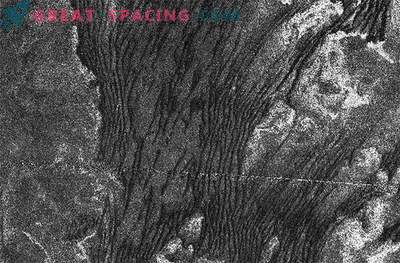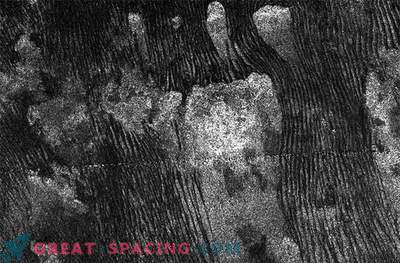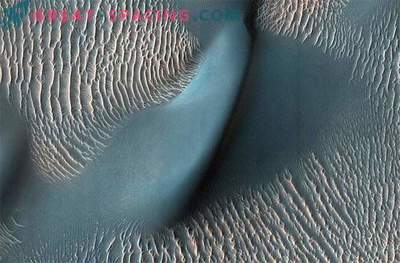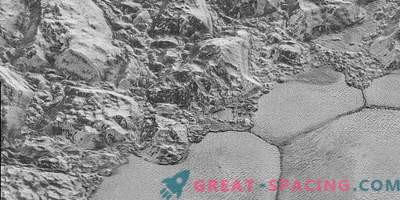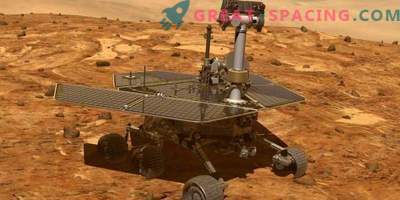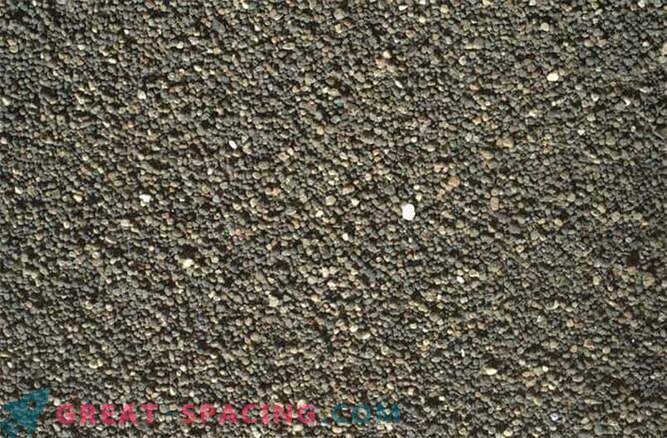
What do you see here? Just sand?
It could easily be just a close-up picture of a small piece of the beach. Or it could be a macro image of sand grains in a children's sandbox, with a bucket and a shovel? But this is neither. Of course, this is sand, but this is Martian sand. Think about it for a moment: we look at the grains of sand from another planet under a microscope. Breathtakingly.
NASA's Curiosity Mars Rover, which has been exploring Mars since 2012, is currently climbing a mountain on Mars in the middle of Gail Crater, looking for evidence of the past (and present) existence of the living environment on the red planet. And along the way, an amazing six-wheeled robot discovered dark sand dunes. Therefore, the scientists decided to re-examine the two-storey dunes of Bagnold.
Taken on Sol 1184 images (from assignment on December 5), the photos show a close-up view of the sand grains of the dunes, obtained thanks to the Mars Rover Curiosity's Mars Hand Lens Imager (MAHLI). Such images will help scientists determine the mineral composition of sand on Mars, as well as how dunes function and develop, especially such active ones as Bagnold.
Dunes Bagnold

When the Curiosity rover explored the Bagnold dunes, scientists noticed their severe darkening. This September Curiosity image shows dark wavy dunes across rocky terrain. As you know, these dunes are active. In other words, the winds on Mars continue to grind and change the shape of the dunes. Due to observations of the dunes of Bagnold from orbit, it is known that the edges of the dunes shift by 3 feet (1 meter) every earth year.
Conquering Martian Dunes
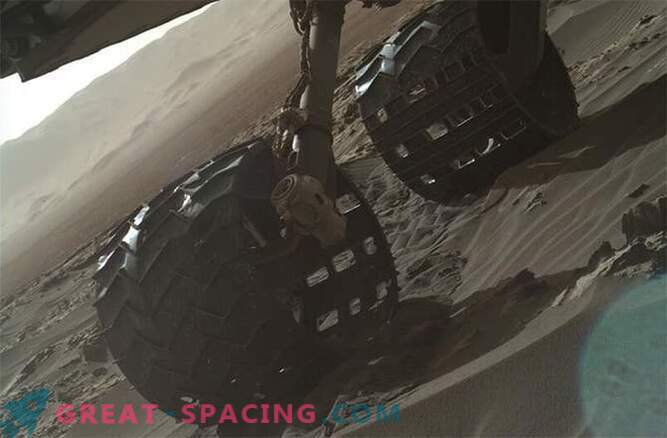
The photograph taken on the MAHLI camera shows that the rover wheels are on the right side while driving along the dune on December 3 (Sol 1182).
Curiosity moves perfectly in the sand, which he proved in February 2014. Climbing Sharpe Mountain, and trying to avoid the relief protrusions and pits, in order not to damage the wheels, the rover needed to get to the small Dingo Gap valley through sand dunes. Although there were fears that Curiosity would get stuck and not be able to leave, the rover overcame the dunes perfectly and continued its mission.
Wind Waves
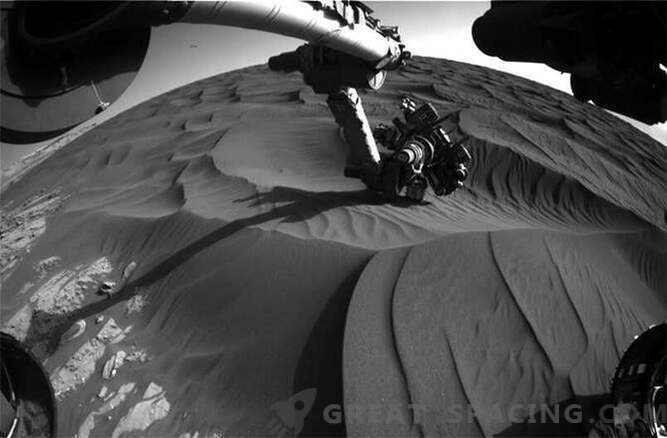
The special Curiosity manipulator allows you to reach the surface of a dune, undulating from the wind, so close as to begin the exploration of sand particles. Scientists also plan to collect grains of sand for further analysis and comparison of the mineral composition of this sand in the laboratory on board, with samples obtained over the past 3 years in the Gail crater and on the lower slopes of Mount Eolid (informally known as Sharp).
This image was captured with the Hazard Avoidance Camera (Hazcam) front camera on Sol 1184 (December 5).
Research near
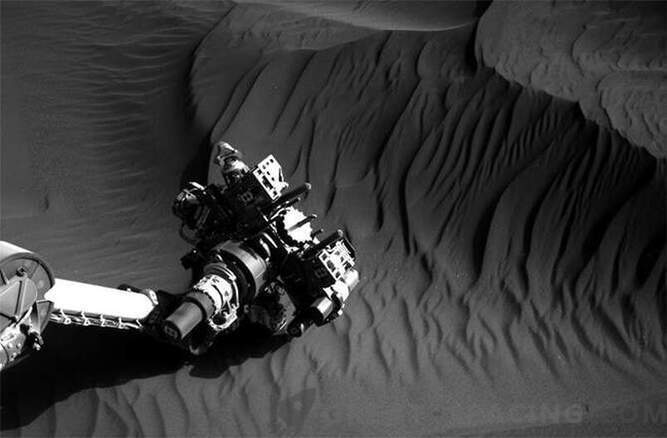
The photo was obtained through the Navcam navigation camera, which looks down on the operation of the device-manipulator. This image shows amazingly detailed wind-cut waves on a sandy surface.
Tysch, Tysch, Tysch
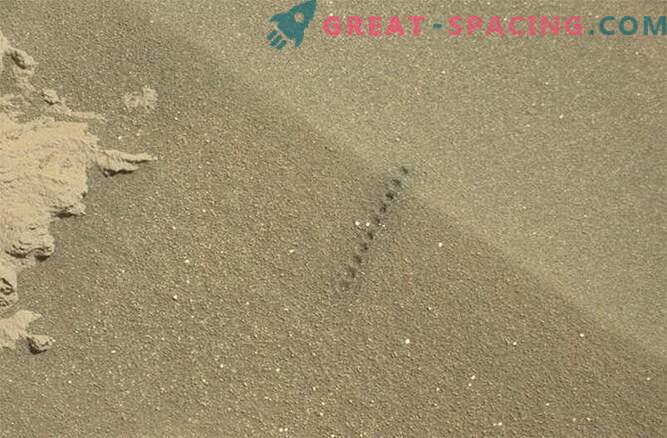
These 10 tracks in the crest of a sand dune are proof of the use of the Curiosity ChemCam laser tool. ChemCam focuses its beam on the top layer of a substance (it doesn't matter if it is a stone, or in this case, sand) and turns it into plasma flashes. After the laser pulses, the flashes are measured and their spectroscopic data is recorded to determine the composition of this substance. This image was obtained thanks to the Mastcam system on Sol 1177 (November 28) before starting to explore the dunes.
One small ... footprint

It is surprising that the boot trace (or, in this case, the track from the rover of the Curiosity) can tell us about the surface of another world. The trail of “one small step” by Neil Armstrong provided the most valuable data on the composition of a thin layer of the lunar surface - regolith in 1969. Similarly, traces of the rover wheels are used to find out the “stickiness” and composition of small sand grains from dunes on Mars.
Watching Curiosity prints, scientists can also figure out which material is under the top layer. This method was vividly demonstrated after 2006, when the Spirit rover suffered because of a stuck wheel. However, the failure is obvious, because the stuck wheel was dragged along the crater of the Gusev with the risk for the rover itself, as a result creating a cavity that can be studied.
This image of the rover traces was taken on Mastcam on November 28 (Sol 1174) and creates a definite impression, just like Armstrong's footprint. Despite the fact that Armstrong’s footprint on the Moon remains unchanged (there is no atmosphere on the Moon that would destroy this track), the tracks from the Curiosity wheels will eventually be destroyed as the dunes are active and continue to change due to winds on Mars.







